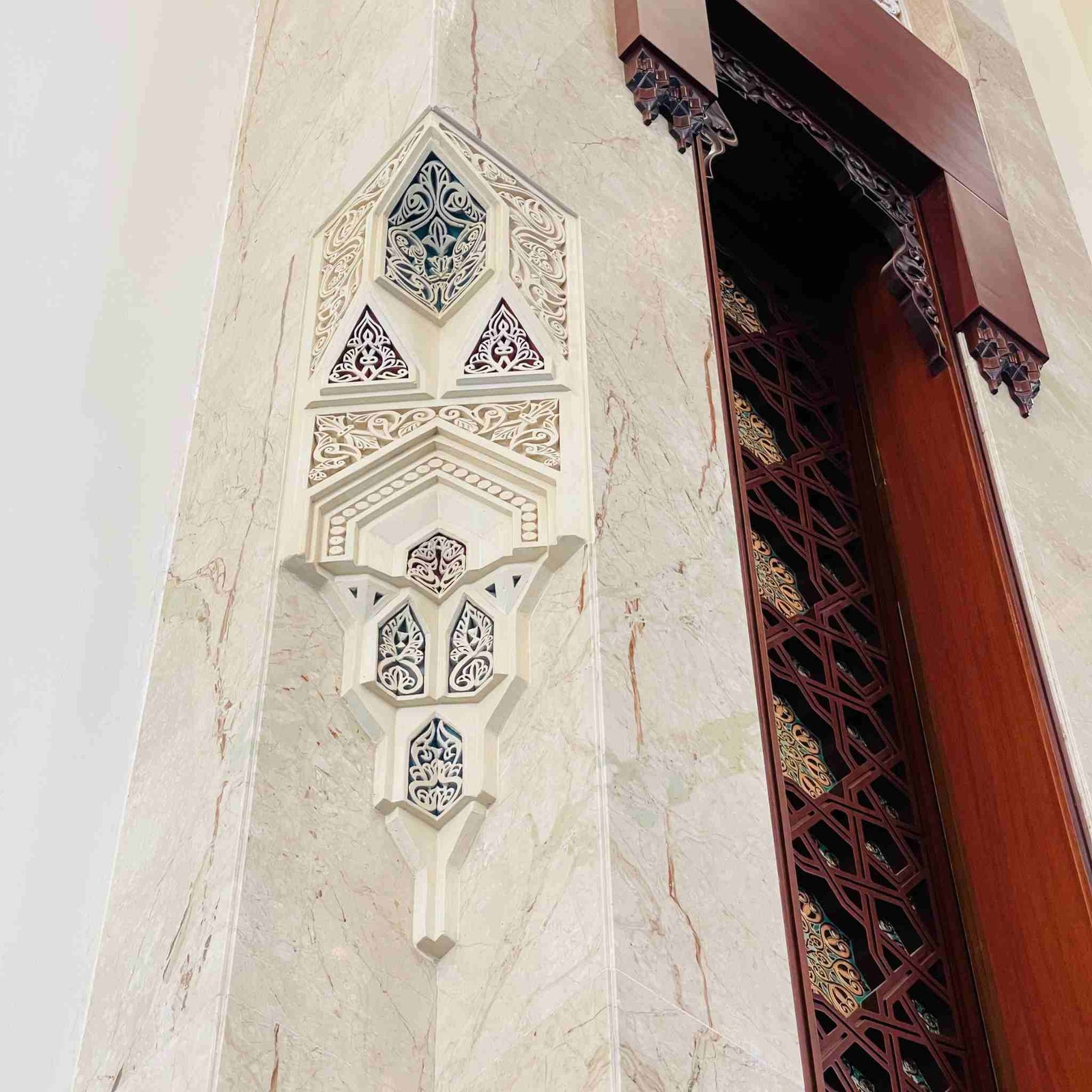How to Perform Salah According to Shafi'i Mazhab: A Step-by-Step Guide
2. Takbiratul Ihram - The Beginner's Solat Book
Page from "The Beginner's Book of Solat for Men & Women With Roman Transliteration (RUMI)"
Takbiratul Ihram marks the initiation of the salah and holds great significance in the prayer. It is the opening declaration that signifies the commencement of the prayer and the transition from the state of everyday activities to the sacred act of worship.
Takbiratul Ihram consists of saying "Allahu Akbar" (Allah is the Greatest) while raising both hands to the level of the shoulders. This action is performed by both the imam (leader of the prayer) and the ma'mum (congregants) simultaneously.
The Takbiratul Ihram serves as a clear demarcation between the mundane activities of daily life and the focused engagement in the worship of Allah. It is a moment of reverence, declaring the greatness and majesty of Allah as the worshipper prepares to stand in His presence.
This opening Takbir is a reminder of the fundamental principle of Tawhid, the oneness of Allah, and the central role He plays in the life of a believer. It sets the tone for the entire solat, emphasizing humility, submission, and devotion.
As the worshipper pronounces "Allahu Akbar," it is a symbolic act of lifting worldly concerns and acknowledging the supreme greatness of Allah. This simple yet profound declaration encapsulates the essence of solat, a direct connection with the Almighty.
3. Stand If You Can
The standing position in salah is indeed significant, especially during the fardhu (obligatory) prayers. It is considered one of the integral components (rukun) of solat and reflects the submission and humility of the worshipper before Allah.
When standing in solat, the worshipper is required to maintain a proper posture, exhibiting respect and devotion. Here are some key points to remember during the standing position:
- Hand Placement: Place the right hand over the left, placing them below the chest and above the navel. The hands should be cupped or placed one over the other, with the fingers slightly spread.
- Body Posture: Maintain an upright posture with the body facing the qiblah (the direction of the Kaaba in Mecca). The back should be straight, and the head aligned with the spine.
- Feet Position: Keep the feet parallel to each other, shoulder-width apart. The toes should point in the direction of the qiblah.
- Focus and Presence: While standing, it is crucial to maintain focus and be present in the moment. Avoid distractions and strive to concentrate on the recitation of Quranic verses and supplications.
- Recitation: During the standing position, various portions of the Quran are recited, such as Surah Al-Fatihah and additional verses or chapters. The recitation should be done with clarity and a moderate pace.
Standing in salah symbolizes the worshipper's readiness to stand before Allah, acknowledging His greatness and submitting to His commands. It serves as a physical and spiritual stance of humility and devotion, reinforcing the central tenets of salah.
The flexibility within Islamic teachings acknowledges the diverse circumstances individuals may face. The allowance for sitting during prayer for those who are unable to stand due to health reasons is a testament to the compassion and understanding within the religion. It ensures that individuals, despite their physical limitations, can actively participate in the act of worship.
The recitation of Dua Iftitah (opening dua) after the takbir is a beautiful practice that expresses gratitude, submission, and recognition of Allah's sovereignty. It sets the tone for the prayer, creating a moment of connection and humility before the Almighty.
Islam, as a complete way of life, encompasses both the physical and spiritual aspects of human existence. It provides guidance that considers the well-being of individuals and promotes inclusivity within the community. This inclusivity is particularly evident in the congregational prayers, where individuals of various abilities come together to worship, fostering a sense of unity and shared devotion.
As we engage in these acts of worship, may our hearts be filled with sincerity, humility, and gratitude, recognizing the blessings of flexibility and understanding embedded within Islamic teachings.
While standing, and just after the takbir, it is sunnah to recite Dua Iftitah (opening dua) quietly.
اللهُ أَكْبَرُ كَبِيرًا وَالْحَمْدُ لِلَّهِ كَثِيْرًا وَسُبْحَانَ اللهِ بُكْرَةً وَأَصِيْلًا .وَجَّهْتُ وَجْهِيَ لِلَّذِيْ فَطَرَالسَّمَاوَاتِ وَالْأَرْضَ حَنِيْفًا مُسْلِمًا وَمَا أَنَا مِنَ الْمُشْرِكِيْنَ . إِنَّ صَلَاتِيْ وَنُسُكِيْ وَمَحْيَايَ وَمَمَاتِيْ لِلَّهِ رَبِّ الْعَالَمِيْنَ لاَ شَرِيْكَ لَهُ وَبِذَلِكَ أُمِرْتُ وَأنَا مِنَ الْمُسْلِمِيْنَ
Allāhu Akbar Kabirā,
Walhamdulillāhi Kathīrā
Wa Subhānallāhi Bukratan Wa aṣīlā
Wajjahtu Wajhiya lillazi Fatras-Samāwāti wal-Ardh
Hanīfan Musliman Wa-mā ana minal-musyrikīn
Inna ṣalātī, wa-nusukī wa-mahyaya, wamamātī Lillāhi Rabbil-'ālamīn
Lā syarīka laHu wa bizālika umirtu wa ana minal muslimīn
______
Allah the Almighty, the Greatest
All praises be upon Him
Allah The Most Exalted, day and night
I stand before The One Who created the skies and the lands
I sincerely submit to Allah and I am certainly not among those who associate Allah with other beings
Indeed my Salah, my good deeds, my life and my death are all for Allah The Lord of all the worlds
He has no partner nor parallel whatsoever, and I have been ordered as such, and I am from those who embrace Islam (submits)
Note: Dua iftitah is only recited in the first raka’at of prayer.
Read the previous blog for Step-by-Step Guide to Perform Salah:Step 2















